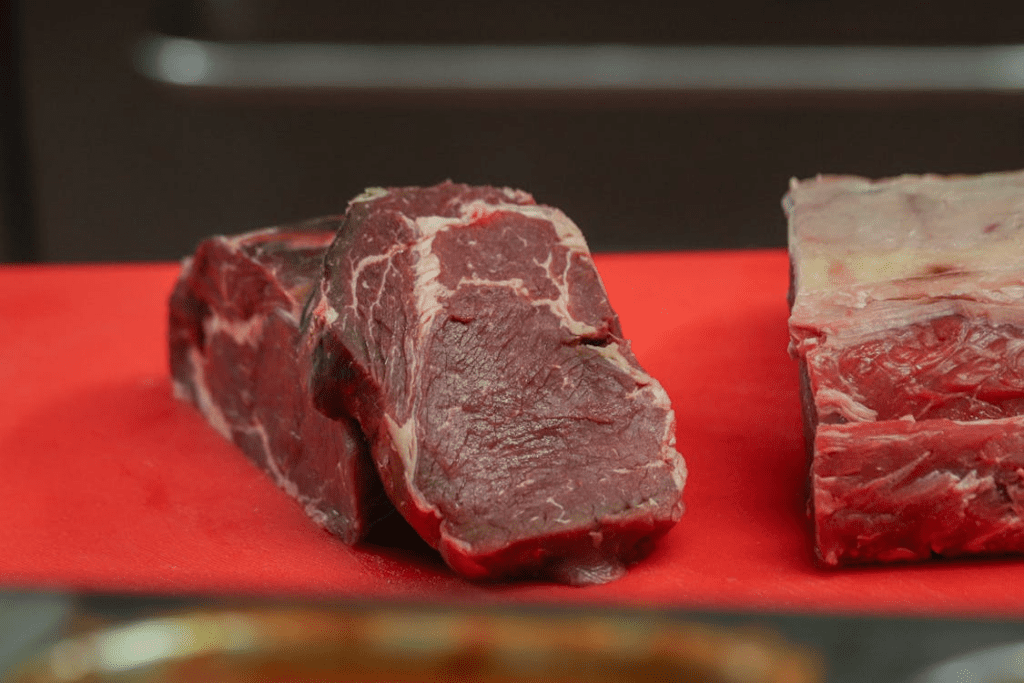Frozen raw pet food is on the rise, and it’s changing the way pet parents think about nutrition.
From freezer aisles to doorstep deliveries, raw diets for pets promise cleaner ingredients and real benefits. But is it just another trend? Or is it something truly transformative for your pet’s health?
Let’s explore what’s behind the boom, what the experts say, and whether it’s the right move for your dog or cat.
What Is Frozen Raw Pet Food?

Raw pet food is made from uncooked animal ingredients, typically meat, organs, and bones, combined with fruits, vegetables, and essential nutrients. These meals are flash-frozen to lock in nutrition and freshness without relying on artificial preservatives or high-heat cooking.
This pet feeding style mimics what dogs and cats might eat in the wild: protein-rich, low-carb, and minimally processed. It’s designed to be biologically appropriate and easier for pets to digest.
There are several options to choose from, including:
- Complete meals that meet AAFCO standards
- Raw meaty bones for occasional chewing and dental benefits
- Patties or nuggets for portioned convenience
- Toppers or blends to enhance traditional diets
Frozen raw products are kept in the freezer and thawed in the fridge before serving. Some also come in freeze-dried form. To reduce pet health risks, many leading brands use high-pressure processing (HPP).
Read More: Top 10 Dog Health Myths You Need to Stop Falling For
Why More Pet Owners Are Going Raw

One reason for the shift? Visibility.
With raw pet diets, you can see exactly what you’re feeding—real cuts of meat, fresh produce, and no mysterious fillers. But beyond that, many pet parents report real improvements: shinier coats, smaller stools, more energy, and fewer allergy flare-ups.
The global raw pet food market reflects this momentum, projected to reach $13.6 billion by 2032, growing at nearly 9% annually, according to Market Research Future.
A growing number of vets now recognize that, when formulated correctly, raw or minimally processed diets can benefit pets with food sensitivities, digestive issues, or chronic inflammation.
What the Pet Experts Are Saying
Veterinarians urge caution. While raw food for pets is not inherently bad, it’s vital to do it properly and safely. Two of the biggest concerns are pathogens and imbalanced nutrition.
Raw meat can carry harmful bacteria like Salmonella, Listeria, or E. coli—not just dangerous for pets, but for humans, too. According to National Geographic, contamination risks are a growing concern in homes with children, older people, or immunocompromised individuals.
Improperly formulated raw diets can also lead to nutrient deficiencies or excesses over time—especially without veterinary guidance.
Read More: 10 Irresistible Treats You And Your Dog Can Both Enjoy!
Choosing the Right Frozen Raw Brand
If you’re ready to explore frozen raw pet food, choose wisely. Look for brands that:
- Meet AAFCO nutritional standards
- Are formulated by or in consultation with veterinary nutritionists
- Use high-pressure processing (HPP) or other safety measures
- Offer full ingredient transparency
Some of the top-rated options in the market include Stella & Chewy’s, Primal Pet Foods, Instinct Raw, and Open Farm RawMix. Regardless of the brand, remember to introduce new foods slowly and monitor your pet’s digestion and behavior as you transition.

Is Frozen Raw Food Worth It?
For some pets, raw is a game-changer. For others, a well-balanced cooked or gently processed option may work just as well. It all comes down to your pet’s unique needs—and your comfort with safe food handling.
What matters most is making informed choices. Talk with your vet. Read your labels. Know where your pet’s food is coming from.
Follow Pet Hub on Facebook, YouTube, and Instagram for adorable pet videos and helpful tips. And don’t forget to follow us on MSN to get the latest pet tips, trends, and tail-wagging updates throughout your day.






